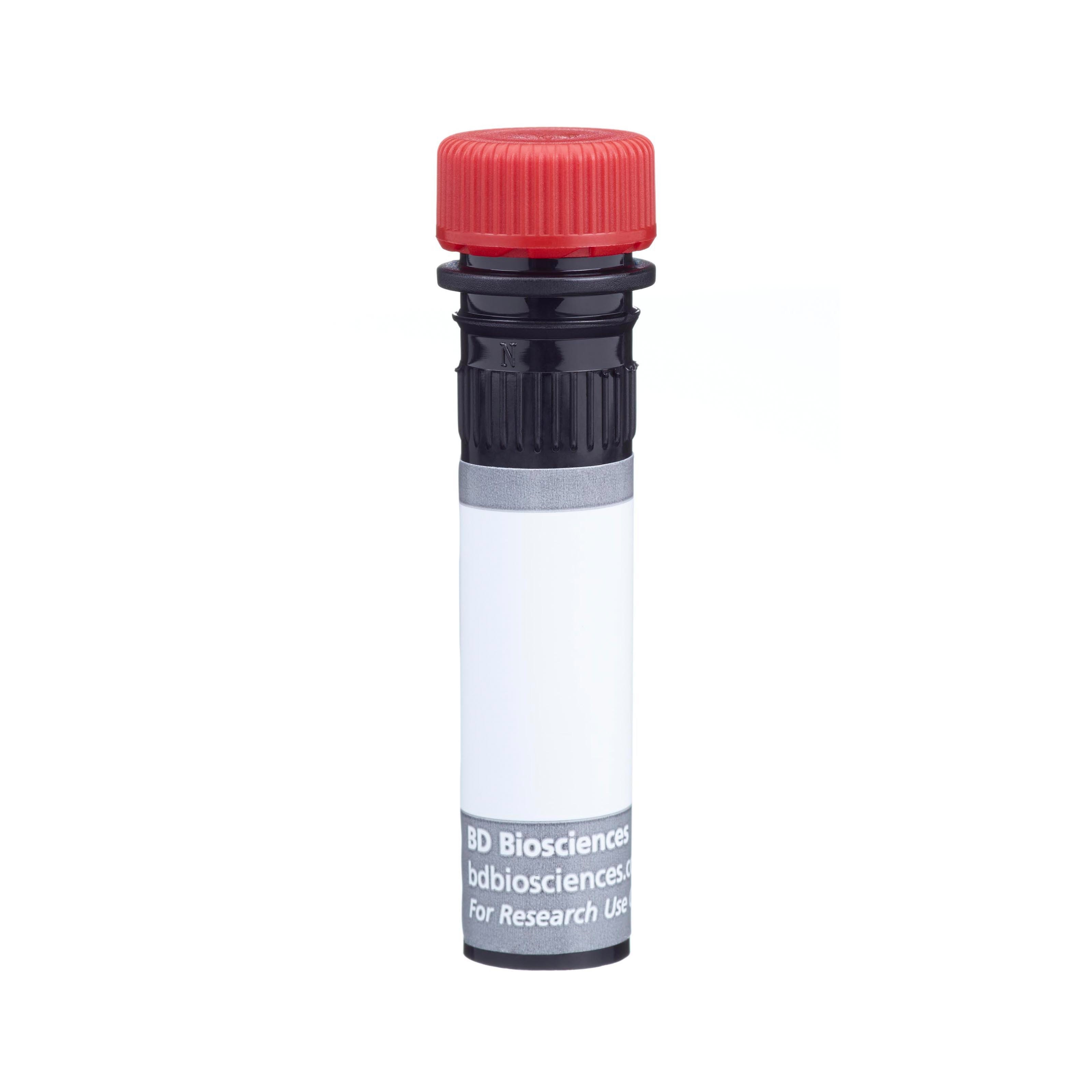Old Browser
This page has been recently translated and is available in French now.
Looks like you're visiting us from {countryName}.
Would you like to stay on the current country site or be switched to your country?


Regulatory Status Legend
Any use of products other than the permitted use without the express written authorization of Becton, Dickinson and Company is strictly prohibited.
Preparation And Storage
Recommended Assay Procedures
For optimal and reproducible results, BD Horizon Brilliant Stain Buffer should be used anytime two or more BD Horizon Brilliant dyes (including BD OptiBuild Brilliant reagents) are used in the same experiment. Fluorescent dye interactions may cause staining artifacts which may affect data interpretation. The BD Horizon Brilliant Stain Buffer was designed to minimize these interactions. More information can be found in the Technical Data Sheet of the BD Horizon Brilliant Stain Buffer (Cat. No. 563794).
Product Notices
- This antibody was developed for use in flow cytometry.
- The production process underwent stringent testing and validation to assure that it generates a high-quality conjugate with consistent performance and specific binding activity. However, verification testing has not been performed on all conjugate lots.
- Researchers should determine the optimal concentration of this reagent for their individual applications.
- An isotype control should be used at the same concentration as the antibody of interest.
- Caution: Sodium azide yields highly toxic hydrazoic acid under acidic conditions. Dilute azide compounds in running water before discarding to avoid accumulation of potentially explosive deposits in plumbing.
- For fluorochrome spectra and suitable instrument settings, please refer to our Multicolor Flow Cytometry web page at www.bdbiosciences.com/colors.
- Please refer to www.bdbiosciences.com/us/s/resources for technical protocols.
- BD Horizon Brilliant Stain Buffer is covered by one or more of the following US patents: 8,110,673; 8,158,444; 8,575,303; 8,354,239.
- BD Horizon Brilliant Ultraviolet 805 is covered by one or more of the following US patents: 8,110,673, 8,158,444; 8,227,187; 8,575,303; 8,354,239.
Companion Products






The RMT2-26 monoclonal antibody specifically recognizes T cell immunoglobulin and mucin domain-2 (TIM-2) which is also known as T-cell membrane protein 2, TIMD-2, or Tim2. TIM-2 is an ~55 kDa type I transmembrane glycoprotein that is encoded by Timd2 (T cell immunoglobulin and mucin domain containing 2) which belongs to the immunoglobulin gene superfamily. TIM-2 contains extracellular IgV and mucin domains and a cytoplasmic region with a conserved tyrosine phosphorylation motif which is involved in transmembrane signaling. A human ortholog for mouse TIM-2 has not been identified. TIM-2 is reportedly expressed on B cells with higher levels on activated B cells and germinal center B cells, type-2 T helper (Th2) cells, oligodendrocytes, and epithelial cells in the kidney and liver. It may serve as a receptor for Semaphorin 4A (Sema4A) or the heavy chain of ferritin (H-ferritin). The RMT2-26 antibody can reportedly block the binding of H-ferritin to TIM-2.
The antibody was conjugated to BD Horizon™ BUV805 which is part of the BD Horizon Brilliant™ Ultraviolet family of dyes. This dye is a tandem fluorochrome of BD Horizon BUV395 with an Ex Max of 348 nm and an acceptor dye with an Em Max at 805 nm. BD Horizon Brilliant BUV805 can be excited by the ultraviolet laser (355 nm) and detected with a 820/60 filter and a 770LP.

Development References (8)
-
Abe Y, Kamachi F, Kawamoto T, et al. TIM-4 has dual function in the induction and effector phases of murine arthritis.. J Immunol. 2013; 191(9):4562-72. (Clone-specific). View Reference
-
Chakravarti S, Sabatos CA, Xiao S, et al. Tim-2 regulates T helper type 2 responses and autoimmunity.. J Exp Med. 2005; 202(3):437-44. (Biology). View Reference
-
Chen TT, Li L, Chung DH, et al. TIM-2 is expressed on B cells and in liver and kidney and is a receptor for H-ferritin endocytosis.. J Exp Med. 2005; 202(7):955-65. (Biology). View Reference
-
Han J, Seaman WE, Di X, et al. Iron uptake mediated by binding of H-ferritin to the TIM-2 receptor in mouse cells.. PLoS ONE. 2011; 6(8):e23800. (Biology). View Reference
-
Kawamoto T, Abe Y, Ito J, et al. Anti-T cell immunoglobulin and mucin domain-2 monoclonal antibody exacerbates collagen-induced arthritis by stimulating B cells.. Arthritis Res Ther. 2011; 13(2):R47. (Immunogen). View Reference
-
Kumanogoh A, Marukawa S, Suzuki K, et al.. Class IV semaphorin Sema4A enhances T-cell activation and interacts with Tim-2. Nature. 2002; 419(6907):629-633. (Biology). View Reference
-
Rennert PD, Ichimura T, Sizing ID, et al. T cell, Ig domain, mucin domain-2 gene-deficient mice reveal a novel mechanism for the regulation of Th2 immune responses and airway inflammation.. J Immunol. 2006; 177(7):4311-21. (Biology). View Reference
-
Rodriguez-Manzanet R, DeKruyff R, Kuchroo VK, Umetsu DT. The costimulatory role of TIM molecules. Immunol Rev. 2009; 229(1):259-270. (Biology). View Reference
Please refer to Support Documents for Quality Certificates
Global - Refer to manufacturer's instructions for use and related User Manuals and Technical data sheets before using this products as described
Comparisons, where applicable, are made against older BD Technology, manual methods or are general performance claims. Comparisons are not made against non-BD technologies, unless otherwise noted.
For Research Use Only. Not for use in diagnostic or therapeutic procedures.
Report a Site Issue
This form is intended to help us improve our website experience. For other support, please visit our Contact Us page.